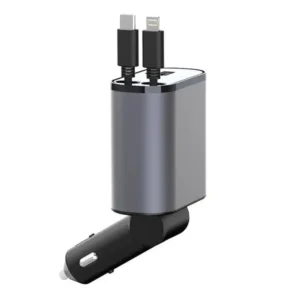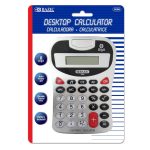Understanding the fundamentals of 30-day account terms is essential for every business owner. These terms, often referred to as “Net 30,” dictate the payment period allotted to your customers after they receive an invoice.
A smooth invoicing and payment process is crucial not just for managing cash flow but also for maintaining good relationships with your customers. This guide offers a comprehensive look into how 30-day account terms work, their implications, and how they fit into the broader context of business finance.
From the basics of account terms to the nuances of late payments and discounts, we’re here to provide clarity and guidance on integrating these practices into your business operations effectively.
Building Business Credit in 30 Days
Effectively utilizing Net 30 terms can be instrumental in building business credit quickly. Here’s how:
- Establish Net 30 Accounts with Vendors: Open Net 30 accounts with multiple vendors who report to credit bureaus. Consistently making payments on time will help establish your business credit profile.
- Monitor Your Credit: Regularly check your business credit reports to ensure that your timely payments are being recorded correctly. Dispute any inaccuracies promptly.
- Pay Early: Whenever possible, pay invoices before the 30-day term to create a positive payment history and potentially earn early payment discounts.
- Keep Financial Records: Maintain accurate records of all transactions and payments. This not only helps in managing cash flow but also provides documentation in case of disputes.
- Leverage Technology: Use accounting software to automate and track payments, ensuring you never miss a payment deadline.
Understanding 30-Day Account Terms
Definition and Importance
30-day account terms, commonly referred to as Net 30, are a form of trade credit that are widely utilized in the business-to-business (B2B) sector. Essentially, Net 30 terms allow a customer 30 calendar days from the invoice date to pay the total amount due. This period includes weekends and holidays, providing the buyer with a significant advantage by effectively extending a credit period without interest. Such terms are crucial for maintaining healthy business relationships, managing cash flows efficiently, and ensuring the smooth operation of supply chains. By offering Net 30, companies show an expression of trust towards their clients, potentially fostering long-term business relationships and loyalty.
Common Types of 30-Day Account Terms
There are several variations of 30-day account terms that businesses may encounter or choose to utilize:
1. Standard Net 30: The most straightforward, requiring payment within 30 days from the invoice date.
2. Net 30, End of the Month: Popular in the U.K., this term allows the payment to be made by the end of the month following the month of the invoice date.
3. Early Payment Discounts: Some businesses incentivize early payments by offering discounts. For instance, terms like “2/10 Net 30” offer a 2% discount if payment is made within 10 days.
4. Monthly Account Statements: In some cases, all transactions within a month are compiled into a statement, with the total amount due 30 days later.
These variations are designed to accommodate different business models and operational requirements, providing both flexibility and control over cash flow and credit management.
Benefits and Drawbacks of 30-Day Account Terms for Businesses
Advantages of Offering Net 30 Payment Terms
Net 30 terms come with several benefits for both suppliers and customers:
1. Improved Business Relationships: Extending credit through Net 30 terms demonstrates trust and can help in building strong, long-term relationships with clients.
2. Increased Competitiveness: Offering Net 30 terms can make a business more attractive to potential clients, especially if competitors demand upfront payments or have stricter terms, that would help you build business credit in 30 days
3. Flexibility for Clients: These terms provide clients with breathing space to manage their own cash flows better, potentially leading to higher order volumes.
4. Opportunity for Early Payment Discounts: Businesses can improve their own cash flow by encouraging faster payments through early payment discounts while still offering Net 30 terms.
Disadvantages and Potential Risks
However, offering Net 30 terms is not without its challenges and risks:
1. Cash Flow Delays: Extending credit can result in cash flow hiccups, particularly for small businesses that may rely on timely payments to cover operational costs.
2. Late Payments: Despite the terms, late payments are a common issue, further straining the supplier’s cash flow, this could harm your set goals to build business credit in 30 days.
3. Credit Risk: There’s always a risk that a customer may default on their payment, which can lead to additional expenses related to collection efforts or write-offs.
4. Opportunity Costs: Money tied in outstanding invoices could have been used elsewhere to grow the business or for obtaining early payment discounts from suppliers.
How Net 30 Terms Can Impact Cash Flow and Customer Relations
Net 30 terms can help you effectively to build business credit in 30 days and influence a business’s operations in several ways. Positively, they can strengthen customer loyalty by offering financial flexibility, making it easier for customers to manage their purchases and payments efficiently. This can lead to recurrent business and a stable customer base.
Moreover, the potential for early payment discounts can enhance supplier-client relationships by offering financial benefits for prompt payments.
On the flip side, extending credit through Net 30 can potentially strain a business’s cash flow, especially for small businesses or startups with limited capital. It can delay the reinvestment of income into business operations, acquisition of inventory, or settlement of own accounts payable.
Therefore, businesses must carefully weigh the advantages against the potential drawbacks when deciding to offer Net 30 terms. Effective management of these terms requires clear communication, diligent invoicing, and possibly leveraging tools like invoice factoring to mitigate the risks associated with late payments.
Strategizing for Success with 30-Day Account Terms
Setting Clear Payment Terms and Expectations
Establishing transparent and understandable payment terms is a cornerstone of successful financial relationships between businesses and their clients. With 30-day account terms, it’s vital to ensure that both parties have a shared understanding of when payment is expected. This means explicitly stating the terms “Net 30” on invoices and contracts, indicating that payment is due within 30 calendar days from the invoice date.
It’s also crucial to clarify whether this period starts from the date of the invoice, the delivery of goods or services, or another milestone. Doing so helps prevent misunderstandings and sets the stage for a trustworthy relationship.
Early Payment Discounts and Incentives
Providing incentives for early payments can significantly enhance the likelihood of receiving payments within the 30-day window or even earlier. Early payment discounts, such as “2/10 Net 30,” offer customers a 2% discount if they pay within 10 days instead of the full 30 days.
This not only encourages faster payments but also enhances cash flow and reduces the burden of following up on overdue payments. When implementing such discounts, it’s essential to communicate the offer clearly on the invoice and in any contractual agreements, ensuring customers are aware of the potential savings.
Managing Late Payments and Maintaining Cash Flow
Despite clear terms and incentives, late payments can still occur, impacting your cash flow and potentially disrupting operations. To manage late payments effectively, consider implementing a late fee for payments past the due date and regularly follow up with reminders as the due date approaches.
Additionally, developing a procedure for escalating collection efforts for significantly overdue accounts can help mitigate potential financial strain. Exploring options like invoice factoring, where unpaid invoices are sold to a third party for immediate cash, can also provide a lifeline in tight cash flow situations.
Alternatives to 30-Day Account Terms
Other Payment Term Options
While 30-day terms are standard, they’re not the only option available to businesses to build business credit in 30 days. Depending on your cash flow needs and the nature of your client relationships, you may consider alternatives such as Net 15, Net 60, or even immediate payment upon delivery of goods or services.
Offering a range of payment terms can provide flexibility to your clients and may help secure business in competitive situations. It’s also valuable to consider the industry standard for your specific sector and align your terms accordingly.
The Role of Invoice Factoring
Invoice factoring can be an attractive alternative for businesses looking for immediate cash flow rather than waiting for the 30-day payment period. By selling your unpaid invoices to a factoring company at a discount, you receive instant cash, which can be particularly useful for covering operational costs or taking advantage of growth opportunities.
Factoring companies then assume the role of collecting the outstanding payments, freeing up your resources to focus on core business activities. While this option involves giving up a portion of the invoice value, the immediate liquidity and transfer of collection responsibilities can outweigh the costs.
Automating Payment Collection to Mitigate Late Payments
Leveraging technology to automate payment collection can significantly reduce the incidence of late payments. Using platforms that facilitate ‘pull’ payments—where you, as the vendor, initiate the payment transaction—can ensure timely payments within the specified terms.
Automated reminders and recurring billing features can further streamline the payment process, reduce manual administration, and improve the overall reliability of your cash flow. Additionally, providing multiple payment options, including direct bank transfers and online payment portals, can make it easier for clients to settle their invoices promptly.
In conclusion, navigating 30-day account terms successfully requires clear communication, incentivizing prompt payments, and managing late payments effectively.
By considering alternative payment terms and leveraging invoice factoring and automation software, businesses can maintain healthy cash flows and build strong, lasting customer relationships.
Spotlight on 30-Day Vendors
 Image courtesy: Unsplash
Image courtesy: Unsplash
When navigating business transactions, particularly in the B2B sector, terms of payment are critical for maintaining a healthy cash flow and developing sturdy relationships with vendors and clients alike. Among the various payment terms, the 30-day account terms, commonly referred to as Net 30, stand out as one of the most utilized across industries. This section highlights the importance of understanding and effectively implementing 30-day account terms, using The CEO Creative as a prime example of successful application.
The CEO Creative 30-Day Payments
The CEO Creative, a hypothetical business entity operating within this context, symbolizes a model for managing 30-day payment terms effectively helping you build business credit in 30 days seamlessly. For businesses like The CEO Creative, employing Net 30 provides several advantages, not only in terms of financial flexibility but also in fostering strong vendor relationships and establishing a reliable reputation in the industry.
Net 30, in essence, implies that the payment for goods or services received is due 30 days from the invoice date. This time frame is inclusive of non-working days, providing a uniform period for accounts payable regardless of weekends or holidays. The simplicity and predictability of Net 30 make it a preferred choice, offering ample time for businesses to manage their finances without incurring added charges or needing to negotiate extended payment terms.
For companies akin to The CEO Creative, leveraging Net 30 effectively involves clear communication, meticulous financial planning, and the leveraging of early payment incentives when possible. Vendors offering terms like 2/10 Net 30, for instance, provide a discount for payments made within ten days rather than the full thirty. Such arrangements can lead to considerable savings and enhance vendor-client relations by demonstrating financial responsibility and commitment.
Understanding the mechanics of Net 30 and similar payment terms is crucial. Beyond merely noting the timeframe, businesses must be vigilant about the exact starting point of the 30-day period.
Navigating payment terms successfully, much like The CEO Creative, rests on a foundation of strategic finance management, strong communication, and adaptability. Understanding the terms themselves, alongside their implications on business relationships and cash flow, equips companies to make informed decisions that align with their operational objectives and financial health.
Conclusion
Navigating the specifics of 30-day account terms is vital for maintaining healthy business finances and fostering strong customer relationships and building business credit in 30 days. By understanding the various ways 30-day terms can be structured, such as counting from the invoice date or a specific date in the following month, businesses can set clear expectations for payment timelines.
Offering net 30 terms, while common and beneficial in building trust and loyalty, carries its own set of challenges, Including potential impacts on cash flow and the risks of late or non-payment.
However, alternatives like early payment discounts or leveraging invoice factoring can help mitigate some of these risks. Moreover, adopting automated payment solutions like GoCardless can streamline the payment process, ensuring timely compensation and reducing administrative burdens.
Lastly, whether net 30 terms are suitable for your business largely depends on your operation’s cash flow dynamics and the need to balance customer incentives with financial health. Understanding these facets equips business owners to make informed decisions, optimizing their payment terms strategy to support both growth and operational efficiency.








